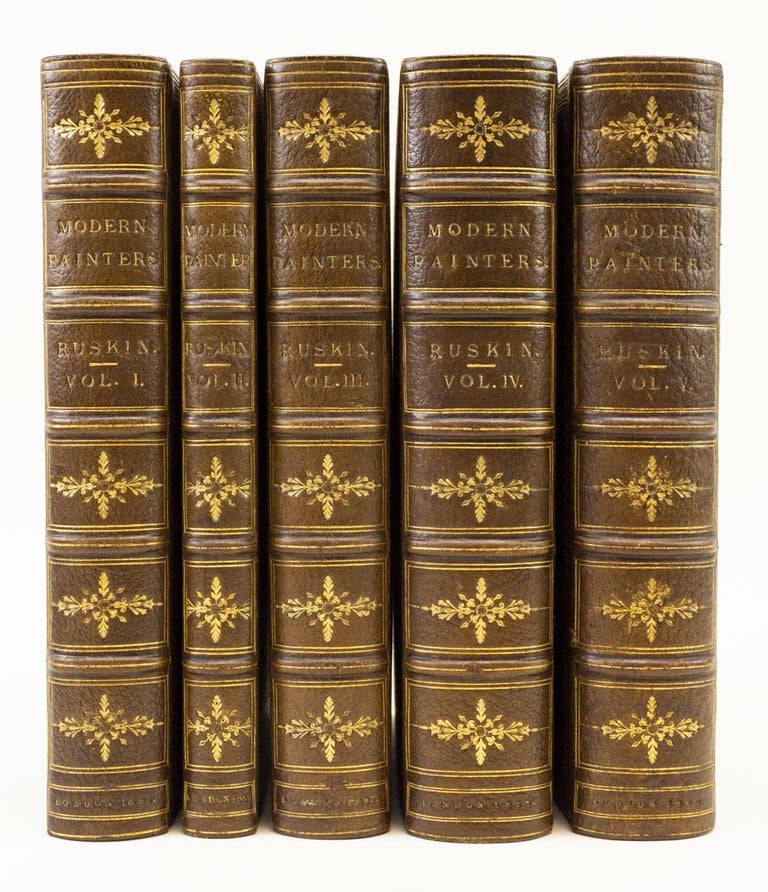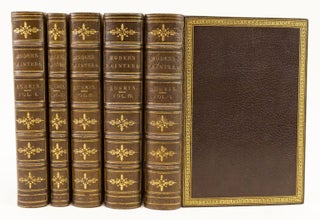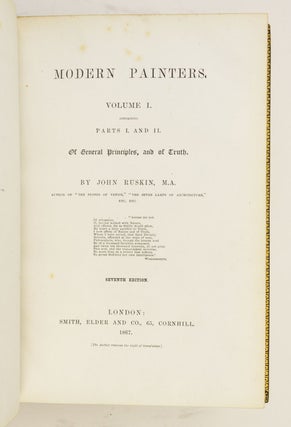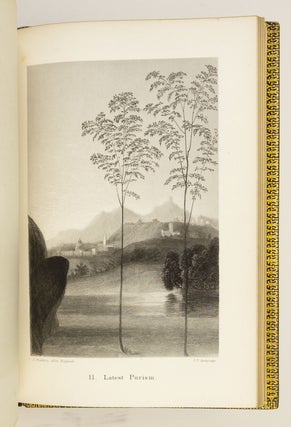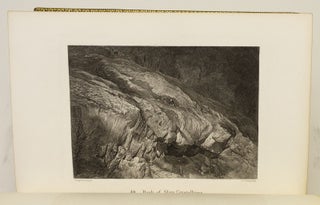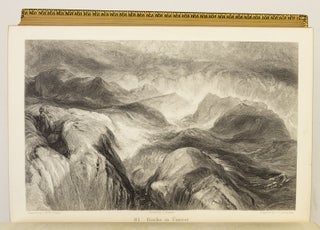MODERN PAINTERS.
(London: Smith, Elder, and Co., 1867-69, 1860). 257 x 175 mm. (10 1/8 x 7"). Five volumes. Seventh Edition of volume I; Fifth Edition of volume II; Second Edition of volumes III and IV; FIRST EDITION of volume V.
HANDSOME 19TH CENTURY BROWN MOROCCO, covers with gilt Greek key roll border, raised bands, compartments with gilt rules, central floral ornaments, and gilt lettering, gilt turn-ins, all edges gilt. Volumes III-V each with frontispiece plus a total of 84 steel-engraved plates (a few in color), eight wood-engraved plates, and several wood-engraved illustrations in the text by the author, J. M. W. Turner, and others. ◆A touch of rubbing to extremities, spines slightly sunned, covers with a few negligible blemishes, but the bindings very well preserved with only minor signs of wear; isolated light foxing to perhaps a score of leaves in total (mostly confined to upper margins and only once touching a plate), a few instances of faint thumbing, but the contents clean and fresh, without the pervasive foxing and browning that often plague this work. AN ATTRACTIVE SET.
This pleasing set is the first major work by John Ruskin (1819-1900), a pre-eminent figure in literary non-fiction whose theories on the interconnection of art and life continue to have influence today. Ruskin begins "Modern Painters" with a defense of the work of J. M. W. Turner (1775-1851) against critics who claimed his work was "unlike nature." In the words of art historian George Landow, the author then goes on to "explain the nature of beauty and demonstrate its importance in human life." In Ruskin's view, says Landow, "all beauty, if properly regarded, is theophany, the revelation of God." Tolstoy said that in all of his writings, Ruskin was "one of those rare men who think with their hearts, and so he thought and said not only what he himself had seen and felt, but what everyone will think and say in the future." In "The Social History of Art," Arnold Hauser proclaims that "there has never been such a clear awareness of the organic relationship between art and life . . . since Ruskin." He describes Ruskin as "the first person in England to emphasize the fact that art is a public concern and that no nation can neglect it without endangering its social existence." And he says that our author was "the first to proclaim the gospel that art is not the privilege of artists, connoisseurs and the educated classes, but is part of every man's inheritance and estate." The numerous plates here--most of which were done either by Ruskin himself or by Turner, the artist he championed--run the gamut from sketches, fully realized landscapes, and studies of leaves, branches, or clouds, and they complement this important text beautifully. Sets of this work are frequently made up of mixed editions, as here, but are often found foxed and browned due to the paper stock. Our copy is mercifully clean, bright, and in an excellent state of preservation both inside and out. (ST15816-13)
Price: $1,600.00

